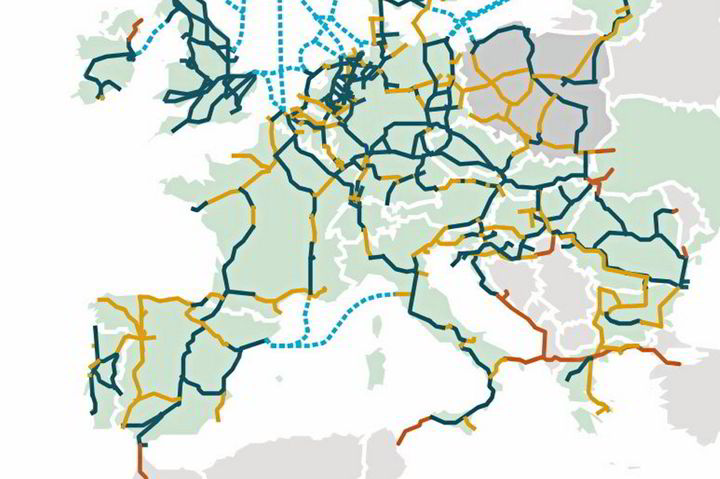Europe’s ‘hydrogen backbone’ of cross-border pipelines will cost billions more euros than initial estimates

The European Hydrogen Backbone (EHB), a coalition of 33 gas infrastructure operators seeking to build an interconnected system of hydrogen pipelines, admits in a report published this week that its previously published estimated price tag of €80bn-143bn ($87.3bn-156bn) for a sprawling 53,000km network could be a massive underestimate.
This cost estimate, calculated in April 2023, was in-part based on prices for pipes and compressors collected in 2019, with the expectation that 60% of the network will be made up of existing, repurposed gas infrastructure and 40% made up of new hydrogen pipelines.
But the EHB’s latest report, Implementation roadmap – Cross border projects and costs updates, which is based on new data collected from its membership of gas network operators, warns that the average prices of these components have all gone up due to inflation.
While a compressor would have cost €3.4m per megawatt-equivalent in 2019, this has now risen to €4m on average, it said.
Similarly, the average per-kilometre costs of onshore hydrogen pipelines have increased by €300,000 for 20-inch-diameter pipes, €1m for 36-inch-diameter pipes, and €1.6m for 48-inch-diameter pipes.
The EHB continues to assume, based on this new data from its members, that repurposing 20-inch-diameter gas pipes will cost 30% as much as installing new pipes this size, while repurposing larger pipes is estimated to be 20% the cost of new installations.
Article continues below the advert
Meanwhile, it also expects that offshore pipelines will still cost nearly twice as much as those onshore.
But while this cost increase for new pipelines and compressors will likely bump up the overall investment needs by billions of extra euros, EHB has declined to provide an exact figure.
The consultancy behind the initiative’s reports, Guidehouse, tells Hydrogen Insight that the re-estimate will depend on getting an up-to-date, exact planned make-up of the hydrogen gas grid — such as the exact sizes of pipes used in each stretch and proportion of new versus repurposed pipelines — as determined by its members.
As it is, these gas network operators are already waiting on the EU’s publication this month of the sixth list of Projects of Common Interest (PCI).
This programme grants selected cross-border energy infrastructure projects a streamlined permitting and environmental assessment process as well as the option to apply for funding from the Connecting Europe Facility.
A number of the cross-national hydrogen pipelines included in the European Hydrogen Backbone, such as AquaDuctus, H2ercules, and Green Octopus Mitteldeutschland, have all applied to be a PCI or Project of Mutual Interest (PMI) — a similar but separate designation for projects that cross into a non-EU country.
As such, many of these companies are likely to publish their own separate update for investment needs if their project is confirmed to be on the list.
The EHB report also anticipates that its members’ projects will have to be ready for a final investment decision between 2026 and 2027, although it notes that “project-specific timelines likely vary depending on the jurisdiction, size, and complexity of a project, as well as established corporate and national procedures”.
It tracks 40 projects that aim for commissioning by the start of the next decade.
However, rather than incremental build-out, less than 3,000km of pipelines per year are expected to be commissioned up to 2029, with a whopping 19,412km of pipelines all scheduled for 2030.
This could present a potential risk of not enough available transmission infrastructure for the EU’s target of 20 million tonnes of renewable hydrogen flowing through Europe by that year, especially if projects are delayed.



